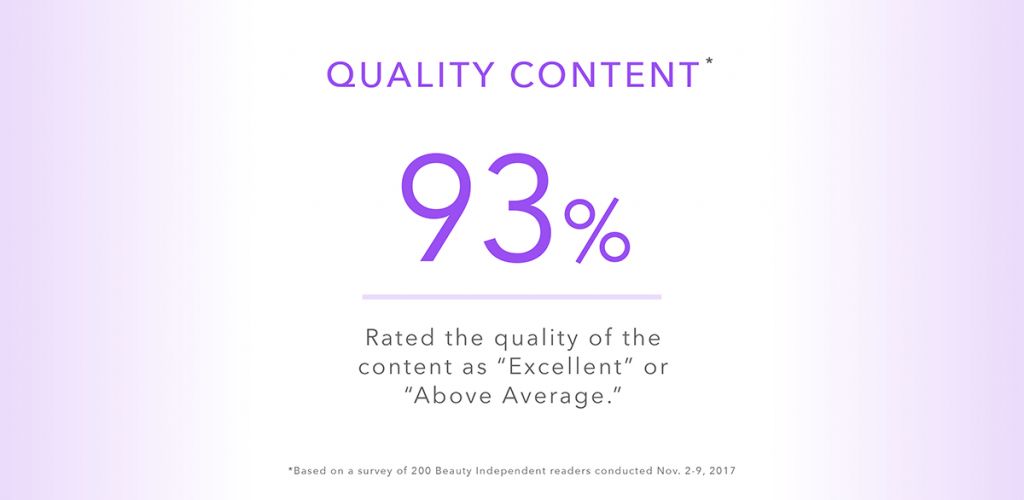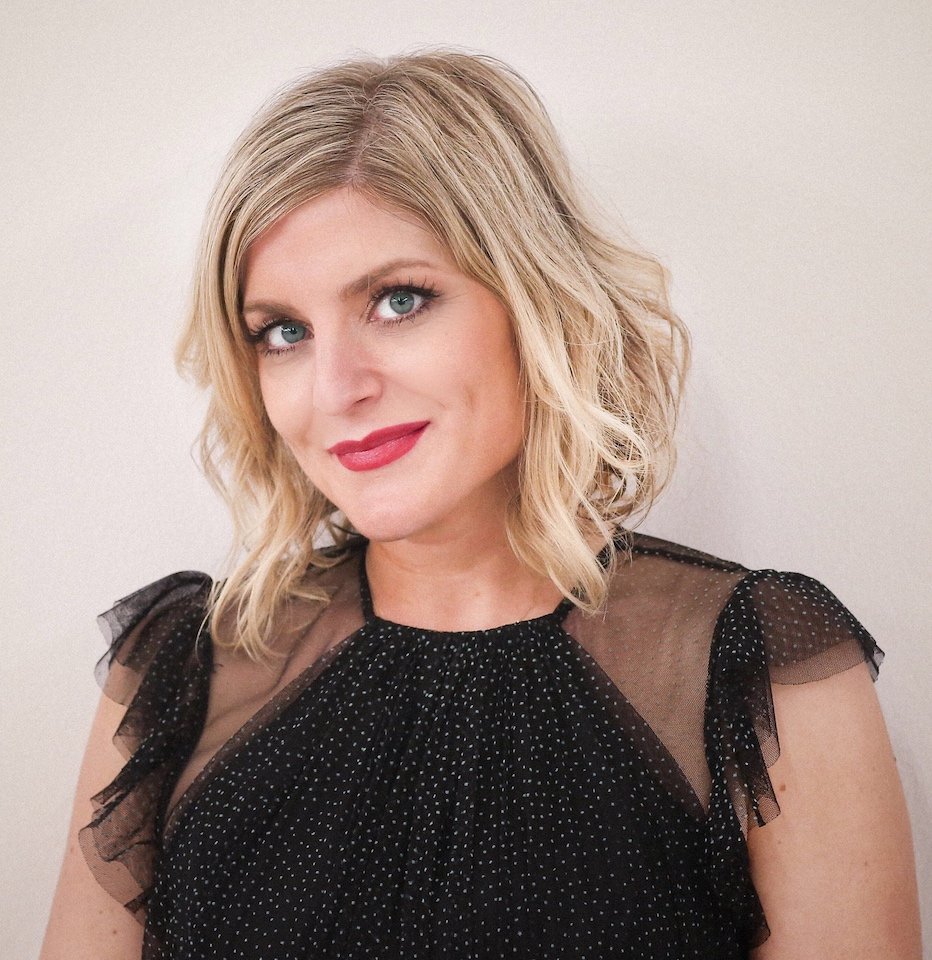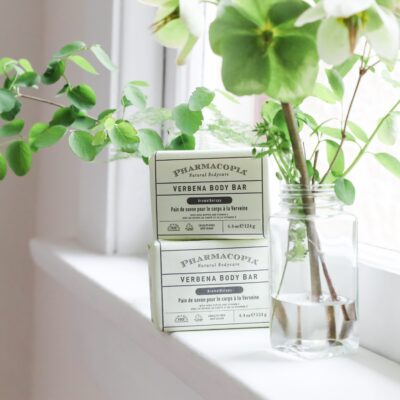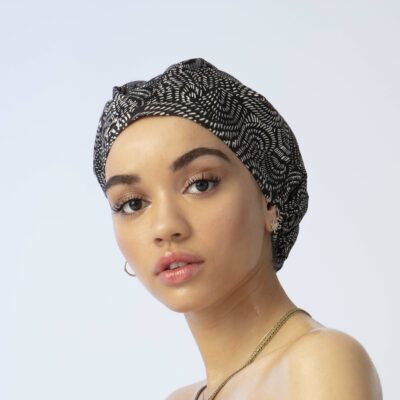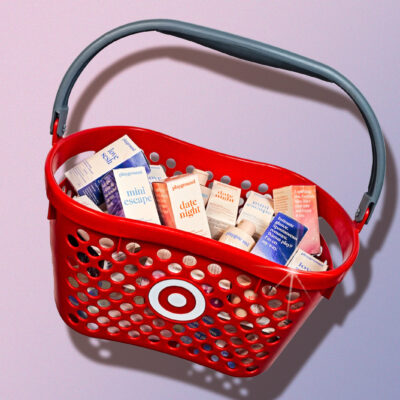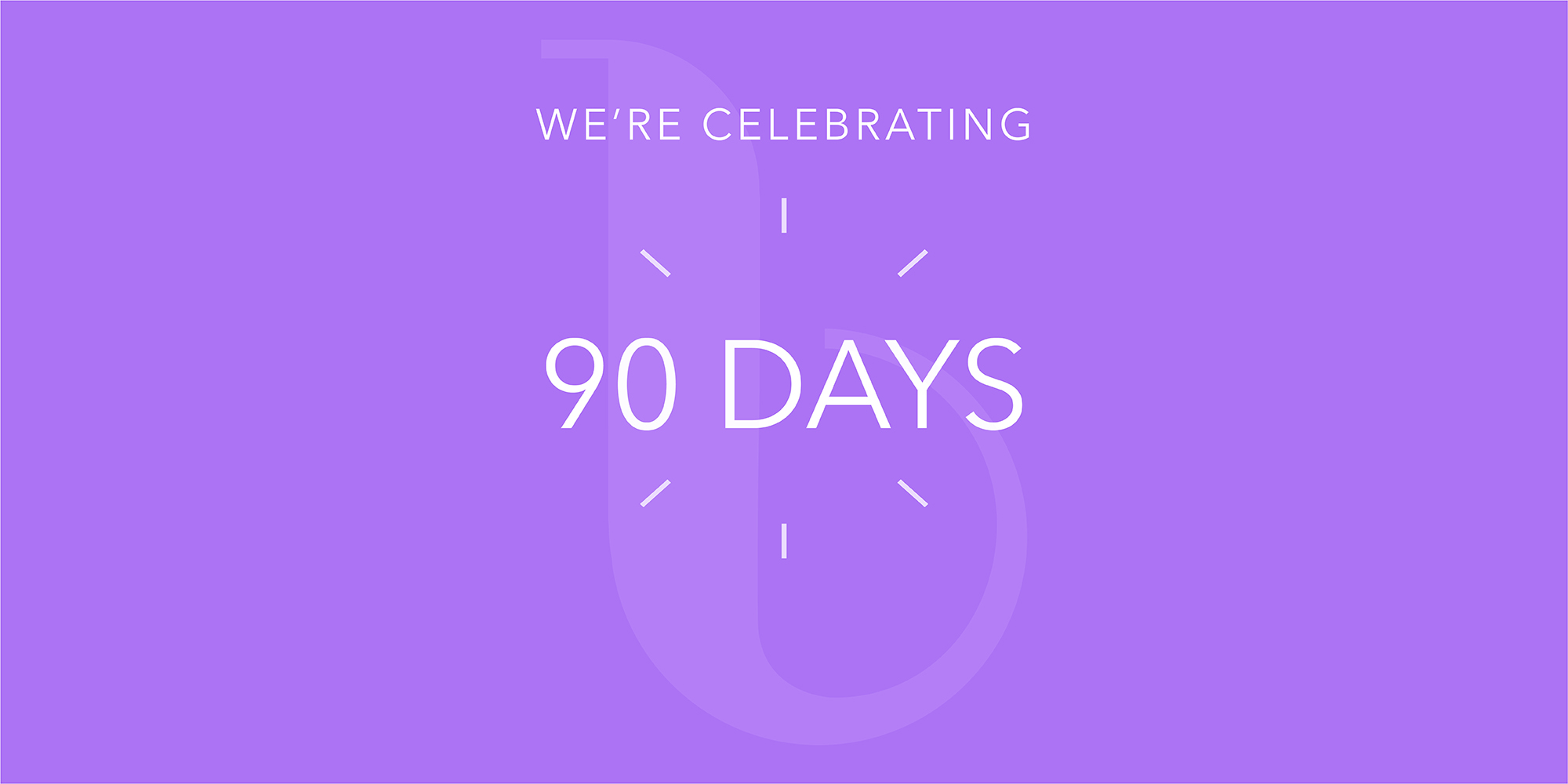
Independent Beauty Brand Champion Rachel Brown Is Just Getting Started
Rachel Brown loves a good story.
In just 90 days, the editor in chief of Beauty Independent has created an online content destination known in the entrepreneurial community for candidly chronicling the successes and struggles of indie beauty brands, retailers, influencers and more. Here, she reflects on her first three months at the helm of this breakthrough beauty business publication, and shares what she’s looking forward to in the days and years to come.
In a recent survey, 91% of Beauty Independent readers stated, “Beauty Independent is a source that I trust and respect.” What did you think of achieving that consensus after only 90 days?
I’m extremely pleased that Beauty Independent readers trust and respect our work. I trust and respect their work, and I endeavor to cover it with care, diligence and an acute focus on what they would like to read about.
What’s it like being part of the IBE family? Does that influence the stories you cover?
Being part of the IBE family is a true honor. Most entrepreneurs connected with IBE believe sharing advice and resources makes everyone better. As Osmia founder Sarah Villafranco says in a Beauty Independent story, “It’s so much healthier to support each other and cheer each other on.” Thankfully, my experience is that indie beauty brand founders are excited to cheer each other on and, as a consequence, provide insight for Beauty Independent articles. Although we regularly cover brands that have exhibited at IBE in Beauty Independent because many of these brands are rising stars in the beauty industry, we don’t just stick to exhibitors. We write about the entire indie beauty universe. We want to bring the latest news and information to you no matter where it comes from to make sure you’re in the know about beauty matters that affect entrepreneurs.
How would you describe Beauty Independent’s tone of voice? Why did you pick it?
We want the tone to be insightful and informative while being friendly. I guess we gravitated to that tone because we aim to be as informative as we can be, but we certainly don’t know everything. We spend a lot of time reporting the stories we publish, and rely on relevant experts to fill us in on significant statistics and key points. However, we are in the same boat as many of our readers. We are an emerging indie beauty business, and it would be disingenuous to talk down to our readers. We are in no way smarter than them or above them. If I need any proof of that, I just look down and see that I’m wearing my pajamas as I answer this question.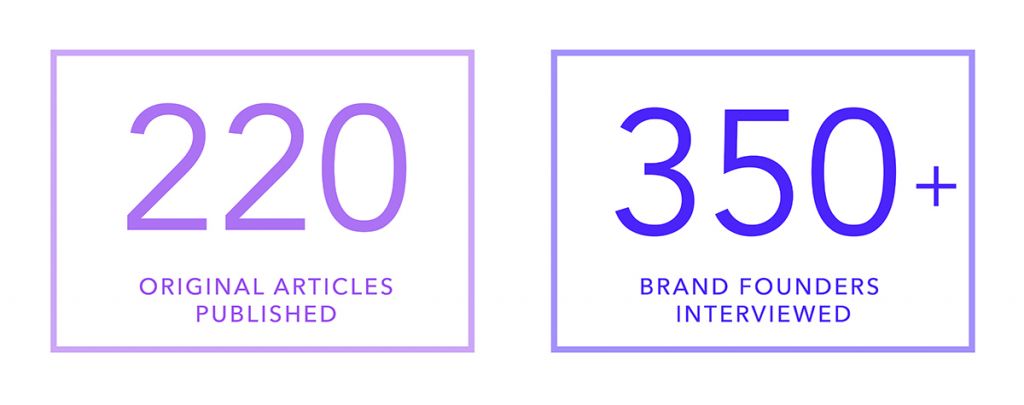
What is the most challenging story you wrote?
The most challenging stories are the ones I haven’t written yet. Our readers are hungry to learn about the investment community and how to get their brands noticed by the right investors. I am anxious to deliver that information to them, but need investors to speak with me honestly and openly to do so. In that vein, the story on FAR Botanicals, a small beauty brand trying to secure funding, was among the most difficult to report and write. It’s well-trodden territory that women- and minority-led companies receive less investment than companies fronted by white males, but it’s challenging to find investors to talk about the reasons behind investment disparities and to talk about them in ways that are relevant to the beauty industry, which is dominated by female consumers and brand founders.
Which story really sticks in your mind?
There are several stories that stick out in my mind. The story on FAR Botanicals is certainly one. I am passionate about covering brands that are not knighted from the outset due to seasoned beauty industry pedigrees, high-profile retail placements and investor interest. There are amazing beauty brand founders across the nation like Sequoia Brown who haven’t taken traditional paths and offer unique perspectives. From Molly With Love founder Molly Beane, who has been frank about her battle with alcoholism, is a true role model. Heather Hamilton’s brand Zoe Organics has faced retail stumbles, but has survived and learned from them. Leticia Cabrero-Calvo’s invention Color Switch is standing out at Sephora amid much bigger players. Chinese immigrant Amy Ling Lin is striving to make work better for the immigrant manicurists at her nail salon Sundays. I am beyond grateful to these women for sharing their experiences with me and the indie beauty community.
How do you choose what and who to research?
I cast a wide net because story ideas come to me in many ways. When I’m not reporting or writing stories, I’m constantly checking social media or indie beauty retail and brand websites for information that moves the needle about interesting ad campaigns, store distribution changes, executive hires, unusual business models and rising trends. I read a variety of publications covering beauty news, including WWD, HAPPI, Cosmetics Design, Racked, Well + Good, GCI, Refinery29, Fashionista and Business of Fashion, to name a few. Of course, I obtain great information by talking to brand founders about their businesses and the market in general. I also think a lot about my own shopping habits and the shopping habits of those around me. The idea for Caroline Tell’s story on freelance careers impacting beauty product purchases and application, for instance, originated from my personal experience cutting back on beauty product usage when I transitioned to working from home and didn’t have to appear suitable for my co-workers in the office.
What have you learned in these first 90 days?
I have learned that beauty entrepreneurs are very interested in learning about how their fellow entrepreneurs are faring. Our founder profiles are some of the most popular stories. I think that’s because entrepreneurial existences can be lonely, and these profiles create a sense of shared experiences. It’s beneficial and oftentimes a relief to learn that other people are going through what you are going through and to read about the obstacles they’ve overcome.
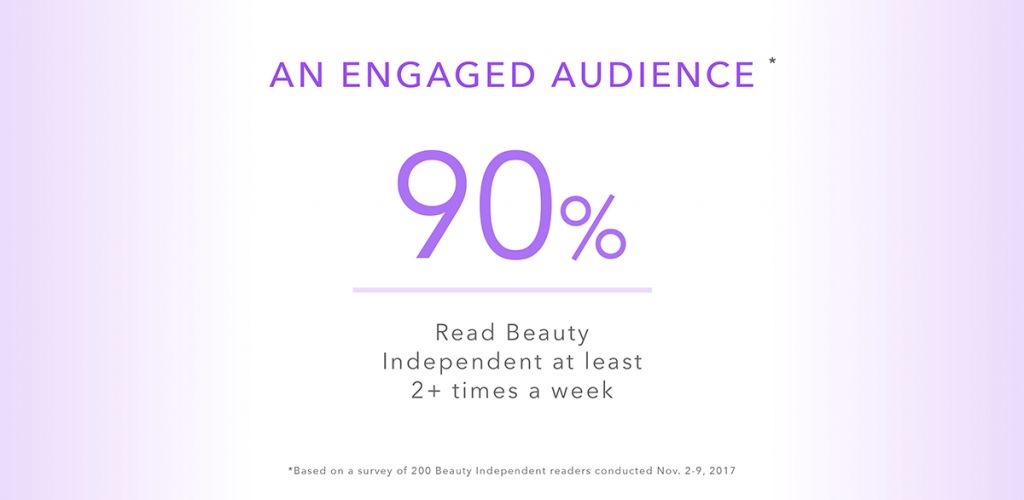
What’s the worst day you’ve had at BI?
There are quite a few worst days. Every day there’s a typo or mistake in an article, that day becomes my worst day. We work fast and, like our readers, have large workloads, so it’s impossible not to avoid small mistakes, but Beauty Independent attempts to adhere to the highest quality standards. When there’s a typo or error, we aren’t meeting those standards, and that’s not acceptable. I want to apologize to any article subjects who have spotted an error in stories written about them. I have thought about every error for a long time after it was made to figure out ways I can do better. Also, please alert me to typos or errors you see in stories so I can promptly correct them.
What’s your typical work day?
My work day usually starts at around 8 a.m. PST. I check emails, scan beauty news, eat breakfast and kiss my daughter goodbye as she jets out the door for preschool. Once my daughter has left, I settle into my home office to make phone calls, write stories and send emails. I typically write two to three articles per day and have calls for at least two to three other stories that I’m working on for later in the week or month. I take a break for dinner at around 5:30 p.m. or so when my daughter arrives home from preschool. After she goes to bed two hours later, it’s back to work writing and editing stories that will run the next day. After I’m finished writing and editing the stories, I will create the email blast that goes out to our audience in the morning. Then, I sleep for a few hours before I focus on Beauty Independent again.
“I am passionate about covering brands that are not knighted from the outset due to seasoned beauty industry pedigrees, high-profile retail placements and investor interest,” says Brown.
What’s something in your office that is precious to you?
When I originally left WWD in 2014 (I went back after that, but that’s another story), my colleagues threw a small going-away party for me, and I have a picture showing all the members of the Los Angeles bureau of WWD present at that party on my desk. I also have a parting gift from my WWD colleagues that has pictures of me with them and information on places to visit in Davis, Calif., where I moved from Los Angeles for my husband’s job. My daughter is always present in my office in two paintings she gave me for Mother’s Day. When she becomes the successor to Jackson Pollock, they will provide evidence that her artistic skills developed early.
What are your future plans for Beauty Independent?
We want lead the conversation in indie beauty by continually improving the content and making certain it stays trusted. We want to help beauty brands grow their businesses and be honest about the challenges they will confront as they try to grow. We would like to increase the readership and put Beauty Independent on the radar of everyone in the beauty industry. We are indebted to our parent company Indie Beauty Expo, but it would be unbelievable to make Beauty Independent a self-sufficient enterprise. To date, we have not received a single dollar in advertising, and we have been able to operate as a result of the generosity of IBE. As our readers know, building a business takes a ton of commitment and energy, but I always strive to carve out time to speak with founders about what they want us to cover at Beauty Independent and how we can best aid them. It’s those conversations that fuel me and Beauty Independent.
